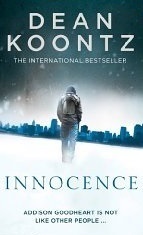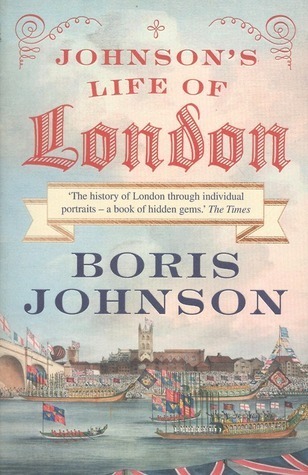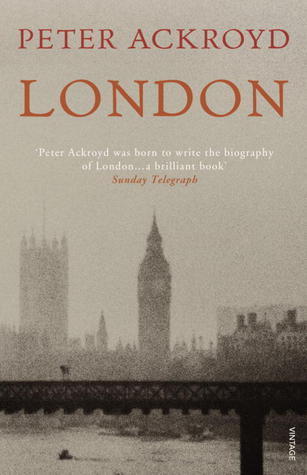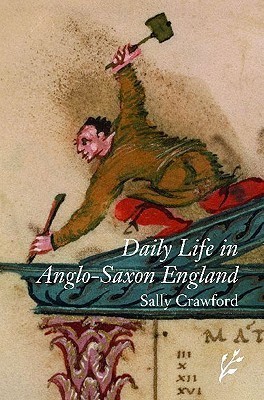Edoardo Albert's Blog, page 96
January 25, 2014
Rejection notes – no.22 in a series
Dear Edoardo,
Thanks for the kind comments about electronic submissions. I’m glad it gave you a chance to submit “Ghost of Mars.” I enjoyed reading this, but the end didn’t quite win me over so I’m going to pass on it. Best of luck to you placing this one elsewhere, and thanks again for sending it my way.
If I do this again I hope to see more submissions from you.
January 23, 2014
Emperors and Sultans
This article first appeared in the Time Out Guide to Istanbul a few years ago.
On the face of it, wielding absolute power as the emperor of the Byzantines or sultan of the Ottomans might seem like a good job. You got to be the main man in what was, for much of the time that both empires endured, the most magnificent city on earth. The Imperial reception rooms of the Byzantine Emperor had golden lions that roared and golden birds that sang. The Ottoman sultans were certainly not outdone in ostentation, although their displays could sometimes take rather charming turns, such as when Selim II wrote to an official in Aleppo: ‘I need about 50,000 bulbs for my royal gardens… I command you in no way to delay.’
But if these images of absolute rulers wandering through palaces and gardens, serenaded by statues and perfumed by flowers, should entice, there is one small consideration: getting to the top, and then staying there. In neither empire was there a strict rule of primogeniture, although being the eldest son of the ruler certainly gave you an advantage. Between the foundation of Byzantium and its fall there were 107 emperors. Only 34 of these died of natural causes and another eight were killed in battle. That leaves 65 emperors who were removed from the throne. So even if you got to the throne, there was only a 39 per cent chance of staying there. Intrigue and assassination were common in imperial circles, which was one reason why an emperor would often kill or mutilate other potential claimants of the throne. (It was widely accepted that a deformed man could not be emperor, and blinding was seen as a more merciful alternative to execution.) Failing to secure the throne meant eventual dethronement and, at best, blinding and banishment, and at worst a long and painful death. Andronikos I, his authority overthrown, was handed over to the mob. He had his teeth broken, his hair pulled out, an eye put out and a hand chopped off during the three days it took him to die.
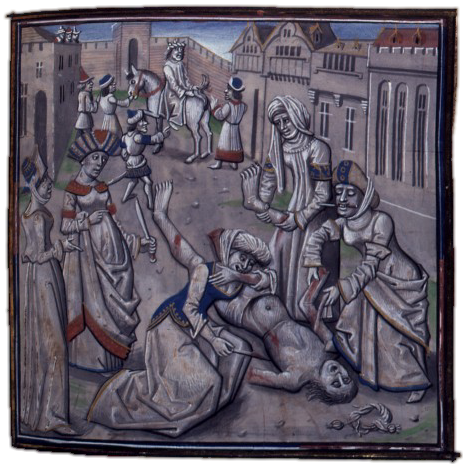
Medieval picture of the death of Andronikos, emperor of Byzantium.
Not that things were any better among the Ottomans. Again, there was no clear law of succession, so the death or decline of the reigning sultan would see an intense power struggle among the claimants to the throne, which included all the brothers and sons of the sultan. Unfortunately, given that the sultans had both wives and innumberable concubines, the number of potential sultans tended to be large. So the first step for any claimant was to fight or intrigue his way past all his uncles, brothers and half brothers.
However, up to the seventeenth century, any brothers of a new sultan were unlikely to get any further chances at the throne: a thorough bout of fratricide being one the first acts of the new ruler of the Sublime Porte. Garroting was the favourite method of disposing of an excess of siblings, a skill in which the palace mutes particularly excelled.
From the seventeenth century onwards the reigning sultan’s brothers were often allowed to live, but that was about it. They were confined to the Kafes, or Cage, a secluded building of the Inner Palace, cut off from all contact with the outside world. There the sultan’s siblings, no matter how young or how old, lived, completely isolated from the outside world apart from some mute servants and a few barren women who formed a harem for the imprisoned princes.
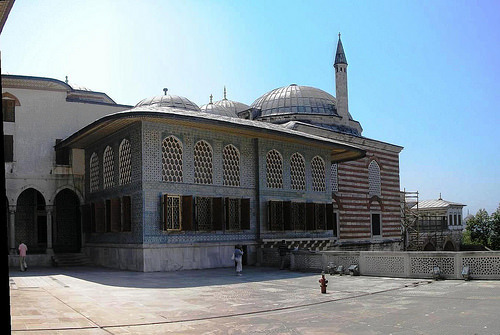
The really rather splendid cage for siblings of the sultan.
Still, palace intrigues or reverses in the larger world could mean the fall of the sultan, in which case one of these men might be dragged, blinking, into the light and acclaimed as ruler of the Ottoman Empire. Ibrahim, the last surviving brother of Murat IV, who had been a prisoner for 22 of his 24 years, refused to open the door to the vizier when he came to tell him that his brother was dead (from cirrhosis of the liver) and he was now sultan. Ibrahim only emerged when the ex-sultan’s corpse was brought to the door, whereat he emerged crying, ‘The butcher is dead, the butcher is dead.’
Now sultan, Ibrahim set about making up for lost time. One source notes that: ‘As Murat was wholly addicted to wine, so was Ibrahim to lust… he frequently assembled all the virgins, made them strip themselve, and himself naked, neighing like a stallion, ran among them, and as it were ravish’d one or another.’
It couldn’t last. Ibrahim was overthrown by the Janissaries and Kara Ali, the chief executioner was sent to do what Murat IV had not got around to. Appropriately enough, Ibrahim was strangled with a garter.
January 21, 2014
Book review: Innocence by Dean Koontz
** spoiler alert ** The engine driving this story, and the key to one’s enjoyment of it, is the mystery of the protagonist. Addison Goodheart lives in isolation in the tunnels under New York, and has done so for 18 years, only venturing out in the quietest times of night, or when the city’s normal inhabitants are driven indoors by particularly bad weather. He sequesters himself – as one of the Hidden, and we learn there are, or were, at least two others – because, on seeing him, people try to kill him. The midwife tried to smother him at birth, his own mother came near to killing him and, in the end, banished him from their home because she could bear the sight of him no longer, strangers seeing him, assault and try to murder him, but Addison remains innocent of wrongdoing. So, the question driving the book, and the reader, is why? One’s initial thought is some physical disfigurement, but it quickly becomes apparent that is not the case. I did wonder, as I’d reached near five sixths of the way through the book (which retains Koontz’s normal narrative flair although in retrospect there may have been some authorial handwaving to drive us past some plot points), whether Koontz would simply leave it open; I was beginning to suspect that he’d dug himself a hole from which there was no escape, other than ignoring the fact he was in a hol in the first place. But doing this would have been a complete authorial cop out.
In the end, Koontz does not disappoint. He gives us the answer near the end, and it is, I think, the only possible explanation: Addison Goodheart truly is innocent, born without the fissure in the soul that marks human beings (an everyday example of how original sin works: think of the relief with which we shuck off good habits compared with our struggles in escaping from bad ones). He is a new Adam, and all those seeing him are struck with the complete intuition of their own evil – no wonder they find him appalling; he strips, unwittingly, their illusions of themselves.
The final few chapters become an Apocalypse – a new earth is ushered in by a devastating virus. I’ve taken off a star because Koontz doesn’t really signal this at all earlier in the book, and for such an ending there should have been some foreshadowing, and the writing style tends too much towards the folksy for my taste. But, overall, one of Koontz’s best, but a story likely to engender extreme reactions due to its ending.
January 19, 2014
Why Do Writers Do It?
The last two sentences of The Box of Delights by John Masefield.
‘Have you had a nice dream?’
‘Yes,’ he said, ‘I have.’
Why? John Masefield, why did you do it? I’d followed Kay Harker through 308 pages of adventures, from mysterious strangers, who apparently remembered this land from pagan times, warning him that ‘the Wolves are running’, through trips in time, changes in size, encounters with talking animals and medieval philosophers, flying cars, pompous policemen – and I’d even read the poems you’d stuck in the text, word for word, and how many readers do that and don’t just skip the poems and carry on with the story, and then, and then, you go and spoil everything.
It was all just a dream.
Is there any more pathetic, more deal breaking, more deceitful and fraudulent phrase in the whole of literature? I, as the reader, have accompanied the writer through the story, accepting it and embracing it, and then, at the end, the writer turns around and spits in your eye: Ha! Fooled you! It was all a dream.
Is there ever any good reason for using this trope? There wasn’t in The Box of Delights. The story was finished, Masefield didn’t need the device to dig himself out of a plot that had spun out of control. Tolkien, in On Fairy Stories, is quite right: any tale that uses this device automatically disqualifies itself from consideration as a fairy tale, indeed, as a good story in the first place, the framing device inevitably disfiguring the narrative beyond repair.
So, writers, however vivid your own dreams, however deep the situation you’ve created for your characters, don’t do it! Never, ever, ever end your story with a dream.
January 16, 2014
Book review: Johnson’s Life of London by Boris Johnson
Johnson writes with the chutzpah of a tabloid journalist and the allusions of a Classical scholar. The book, a history of London through portraits of notable Londoners through the centuries, is vivid and shot through with the sort of one liners that would not be out of place on ‘Have I Got News For You’. It may be an act, but what a finely honed act it is – and I can’t imagine Ken Livingstone writing a book nearly as readable.
January 15, 2014
Book review: London: the Concise Biography by Peter Ackroyd
Ackroyd’s biography of London comes garlanded with accolades and they are well deserved: beautifully written, with a telling eye for detail and stuffed full with anecdote and incident, it is a meditation and discovery of an almost infinitely varied city. Calling it a ‘biography’ rather than a ‘history’ is not, in fact, an affectation but a description – Ackroyd treats London almost as a living creature, obeying the primal impulse to grow and spread (although London does not reproduce itself but, like the Borg, assimilates). My only real criticism is that while Ackroyd argues for the essential paganism of the city, he often brings up but then ignores the many expressions of radical religious dissent that have arisen in London – it’s the only major lacuna I noticed in the book.
Book review: Daily Life in Anglo-Saxon England
The only reason this is not a five-star book is that for the price (£32!!!!) I’d have expected lots of illustrations and a colour section: there’s a few black and white photos, and 25 or so illustrations, but that’s it. Leaving that aside, the actual text provides a wealth of information about the culture and environment of Anglo-Saxon England, from birth to death to burial (a lot on this, of course, as dead bodies are among the most eloquent of remains). A must read for anyone interested in the period.
January 9, 2014
Who is Tom Bombadil?
Bright blue his jacket is, and his boots are yellow.”
The Fellowship of the Ring I 7,
In the House of Tom Bombadil.
Who on (Middle) earth is Tom Bombadil? The question has vexed generations of fans and probably produced more speculation than any other aspect of the mythology of Middle Earth. The Good Professor himself is little help in answering the question. ‘… and even in a mythical Age there must be some enigmas, as there always are. Tom Bombadil is one (intentionally).’ The Letters of J.R.R. Tolkien p174.
Given this statement it seems unlikely we will ever decide who ‘the Master’ is, which is just as well, but to keep the stone rolling I would like to offer some new interpretations which I have not come across elsewhere. These speculations are based on the work of Dr John Carey of University College, Cork, who has been examining how the ancient Celtic myths of Ireland were recorded and – to a degree – even accepted by the Catholic monks who wrote them down and thus preserved them. This is interesting both intrinsically and also because I would think it likely that Tolkien himself knew these sources and the problem these Irish Catholic monks were struggling with was one familiar to Tolkien: how to reconcile his fundamental Catholic faith with his love for the pagan lore and legends of these isles?
Now the Irish monks of the sixth century onwards were faced with the same problem. While the rest of Europe was struggling against waves of barbarian invasions Ireland enjoyed three hundred years of relative peace during which it earned the title ‘the land of saints and scholars.’ Around the great basin of the Mediterranean the old gods of Greece and Rome had long ceased to be objects of religious awe, becoming either buffoons or degenerates and sometimes both at once (Zeus seems to have spent most of his time assuming animal shapes and violating beautiful virgins). So it was not surprising that the early Church adopted one of two modes of explanation of the Classical gods: either they were human beings of long ago whose tales had, over the course of centuries, become so inflated that they were deemed to be gods (an idea which goes under the name, believe it or not, of euhemerism), or they were demons, delegates of the fallen angel Lucifer sent to deceive mankind. And given the centuries of persecution and martyrdom endured by the Church in a Roman state under the tutelage of these old gods it is not surprising that the verdict of the Church Fathers on the Classical pantheon was harsh.
But in Ireland the situation was different. There Christianity had but lately supplanted druidism and had done so peacefully. Indeed John Carey speculates that many members of druidic families may well have entered the Church themselves, bringing with them, largely intact, the legends and stories of the old gods. So, the monks had a problem. Should they simply declare the old gods to be demons, defeated by the new God, Christ? All the records, according to John Carey, show they were extremely reluctant to do that. Instead, over the coming few centuries various scribes and monks – the two terms being pretty well synonymous at the time – proposed variations on three, theologically very daring, schemes.
Their first reading of the old legends was that the old gods were half fallen angels. That is, when Lucifer rebelled against God and was expelled with his followers from Heaven there was a third group of angels who sided neither with Lucifer, nor with St Michael the Archangel, but rather were undecided. Thus, although they could no longer dwell in Heaven, yet they did not deserve hell. So they were expelled to the midway point between Heaven and hell, to the Earth, the Middle Earth. Therefore, according to this idea, the old gods were indeed truly supernatural creatures, but not demonic, nor yet quite angelic, but rather set apart on Earth as ‘wise, benevolent and blessed beings’ (Carey 98).
What relevance does this have to Tom Bombadil? Well, the idea of half fallen angels has an echo in the Ainulindale when some of the Ainur, dismayed at the clamour raised up by Melkor, fall silent, not joining with Melkor’s theme but neither singing the music of Illuvatar. However, I cannot say that Tom Bombadil seems to be in any way a creature who cannot make up his mind between good and evil. But if Tom was an Ainur it would explain both his great power and also, possibly, his age. And it would suggest an answer to how, as Glorfindel suggests, Tom Bombadil could be ‘Last as he was First,’ since one would guess the penalty for a half fallen angel would indeed be expulsion from the heavenly realms until the final resolution of all things.
So that is one possible reading of Tom Bombadil. Another is based on the even more theologically daring explanation adopted by some monks for the old gods that ‘these undying, unfallen beings are… descended from Adam, a branch of the human race which somehow escaped the contagion of the Fall with all its dire consequences’ (Carey 98). Thus the old gods were not demons but rather true human beings in the state of perfection in which we were originally created by God.
How does this fit with Tom? Well, I must say I find attractive the idea that Tom Bombadil may represent primordial man, unfallen and unsullied, and that would certainly explain why the Ring can have no power over him, and why he has no fear. And another area where this interpretation resonates is that if Tom is primordial man he would indeed be the first and the last. If one looks at Genesis chapter 2, there one sees an account of creation where Adam is created first and then the ‘Lord God formed every beast of the field and every bird of the air, and brought them to the man to see what he would call them; and whatever the man called every living creature, that was its name’ (Genesis 2:19-20). This seems to me to approximate to Tom being the Master yet not owning the land and creatures where he lives. They are each their own but Tom is their Master, like Adam in the Garden before the Fall.
The final explanation adopted by the old Catholic monks of Ireland for the old gods of their land is one that Tolkien certainly employed for his own mythology, even if he was unaware that he had been anticipated. For they suggested that the old gods were, in fact, angels, pure and simple, messengers from God Himself sent to prepare the way for the coming of Christ. In the mythology of Middle Earth the Valar are, of course, angels rather than gods, so our final suggestion for Tom is that he may be a fully fledged, completely unfallen Valar. But for myself he seems just too earthy to be an angel.
So, is Tom a half fallen angel, an angel on holiday, or Adam’s unfallen twin brother? Of course, I cannot say for certain, but I hope you might have found interesting how other people, many centuries before the Good Professor, struggled to solve problems similar to those he wrestled with himself.
References.
Quotations are from a lecture by Dr John Carey (19/1/98) Early Irish Christianity: the Baptism of the Gods. Lecture given at the Temenos Academy. Cassette available from: The Temenos Academy, PO Box 203, Ashford, Kent TN25 5ZT. E-mail: stephen.overy@ashfordtelecom.net
Books by Dr John Carey include:
A Single Ray of the Sun: Religious Speculation in Early Ireland. Centre for Advanced Welsh and Celtic Studies. ISBN 189127103-.
King of Mysteries: Early Irish Religious Writings. Four Courts Press, Dublin. ISBN 185182572X.
The Celtic Heroic Age: Translations of early Celtic fragments. Centre for Advanced Welsh and Celtic Studies. ISBN 1891271040.
In the Pink on Yeavering Bell
Yeavering Bell is an Iron-Age hillfort in Northumberland, one of the largest in the country. The tumbledown ramparts, still clearly visible in the photograph below, were originally 10 feet high and they enclose an area of some 12 acres.

Yeavering Bell with ramparts clearly visible.
The hillfort looks over the site of Ad Gefrin, Edwin’s royal palace and the place where Paulinus baptised for thirty days in the River Glen at the bottom of the valley. Ad Gefrin is now a wind-swept field of grass, but it remains a hugely evocative place.

The field of Ad Gefrin, with Yeavering Bell in the background. ‘Look on my works, ye Mighty and despair.’
The rock that was used to build the ramparts of Yeavering Bell is a local andesite that, when first quarried, is bright pink, before lichens and weathering grey it. Where a stone has tumbled, revealing a previously hidden face, it’s possible to see just how Barbie-esque the fortifications would have been when first built.

The salmon pink of fresh andesite – once all the hills were laced with it.
There is, to my mind, something wonderful about the thought of these grim hills – almost all of them had hillforts on them – necklaced in salmon pink.

